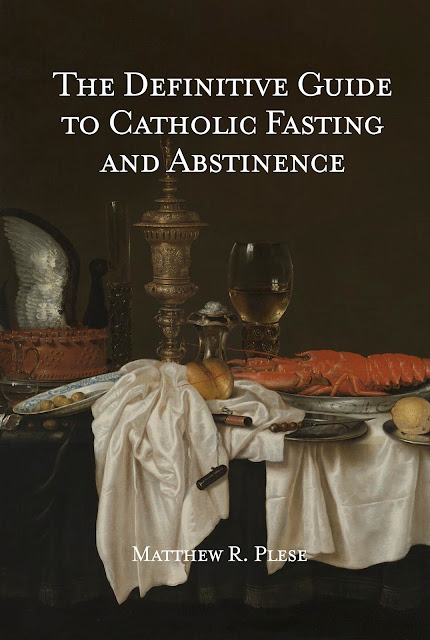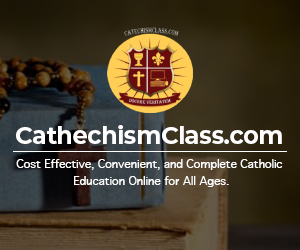Guest Article By David Martin
On June 29, 1972, on the occasion of the ninth anniversary of his coronation, Pope Paul VI declared to the world, "From some fissure the smoke of satan entered into the temple of God."
The pope was referencing the diabolical forces that had infiltrated the Church through the Second Vatican Council (1962-1965).
Now a key objective of Vatican II was the empowerment of the laity, in keeping with its theme of "active participation of the faithful." With the Council came the new definition of priesthood as The people of God. It saw whole Church as one hierarchy or priesthood, but in different ranks, with the ordained ministerial priesthood being only one rank of this priesthood. What was proposed was the fallacy that we are all priests of one hierarchy.
"The common priesthood of the faithful and the ministerial priesthood are nonetheless ordered one to another; each in its own proper way shares in the one priesthood of Christ." (Lumen Gentium 10)
It is a well known and documented fact that the agents of Communism began entering our Catholic seminaries as far back as the 30s for the purpose of destroying the Church from within. Over a thousand such agents had infiltrated the seminaries prior to 1940. The testimonies of ex-communists like Bella Dodd and Manning Johnson who had testified before the House Un-American Activities Committee more than confirm that these agents of the sickle and hammer had been building their forces against the Church with the intention of breaking in and indoctrinating the faithful with anti-church principles.
Their plan was to first absorb Catholic philosophy and teaching in the seminaries so as to give them inside access to masterfully communicate and pull the Catholic hierarchy away from their traditional roots, so that they in turn would embrace revolutionary ideas and become pawns of ecclesial subversion. The Leninist "clenched fist" ideal would now be applied in a spiritual way where the "empowerment of the laity" would be a means of overthrowing the Church's monarchical structure, so that a new sense of democracy and religious liberty would take precedence over the established rule of religion issuing from the Seat of Peter.
Hence we have the modern-day role of lay Eucharistic ministers that are supposedly empowered to perform the priestly function of giving Communion. Eucharistic ministers indeed have been empowered, but their empowerment is from the dark forces. What we’re seeing today is Marxism in full swing. The insidious efforts of communists to infiltrate the Church are now manifest through this and other like practices, e.g. women lectors, lay liturgists.
It was a well orchestrated plan to undermine the priesthood so that spiritual revolution would later ensue under the pretext of a "renewal."
Bella Dodd said in the early 50s: "In the 1930s we put eleven-hundred men into the priesthood in order to destroy the Church from within." Twelve years before Vatican II, she said, "Right now they are in the highest places in the Church." She predicted that the changes they would implement would be so drastic that "you will not recognize the Catholic Church."
Dodd explained that of all the world's religions, the Catholic Church was the only one feared by communists. Her work as a communist was to give the Church a complex about its heritage by labeling "the Church of the past as being oppressive, authoritarian, full of prejudices, arrogant in claiming to be the sole possessor of truth, and responsible for the divisions of religious bodies throughout the centuries."
The focal point of attack would be the Holy Eucharist, as we read in the memoirs of communist agent AA 1025, whose briefcase was discovered after being killed in an auto accident in the mid-sixties. "To weaken more the notion of 'Real presence' of Christ, all decorum will have to be set aside. No more costly embroidered vestments, no more music called sacred, especially no more Gregorian Chant, but a music in jazz style, no more sign of the Cross, no more genuflections, but only dignified stern attitudes. Moreover, the faithful will have to break themselves from the habit of kneeling, and this will be absolutely forbidden when receiving Communion.... Very soon, the Host will be laid in the hand in order that all notion of the Sacred be erased."
Again AA 1025 says, "In the Mass, the words 'Real Presence' and 'Transubstantiation' must be deleted. We shall speak of ‘Meal’ and ‘Eucharist’ instead. We shall destroy the Offertory and play down the Consecration and, at the same time, we shall stress the part played by the people. In the Mass, as it is today, the priest turns his back to the people and fills a sacrificial function which is intolerable. He appears to offer his Mass to the great Crucifix hanging over the ornate altar. We shall pull down the Crucifix, substitute a table for the altar, and turn it around so that the priest may assume a presidential function. The priest will speak to the people much more than before. In this manner the Mass will gradually cease to be regarded as an act of adoration to God, and will become a gathering and an act of human brotherhood."
The foregoing coincides with leaked plans of the Masonic P2 Lodge in Italy that were issued just before Vatican II. Consider this excerpt from their 34 guidelines that were made effective March 1962.
"Get women and laity to give Communion, say that this is the Age of the Laity. Start giving Communion in the hand like the Protestants, instead of on the tongue, say that Christ did it this way. Collect some for Satan Masses."
Can we understand now why the Church today has been virtually overthrown by the post-conciliar revolution? Vatican II opened its doors and invited these agents of Satan to sit in on the Council and participate in the drafting of its documents. Or hadn't it occurred to us why the 1964 Vatican II Instruction Inter Oecumenici commanded that the traditional prayer to St. Michael at the end of Mass be "suppressed?" (Article 48) Obviously the old devil didn't want the faithful praying against him.
The same document states: "The main altar should preferably be freestanding, to permit walking around it and celebration facing the people." (Article 91) This coincides with the memoirs of the above mentioned agent who said, "We shall stress the part played by the people" and who complained that "the priest turns his back to the people and fills a sacrificial function which is intolerable."
There is no arguing that the faithful are called to have "active participation" in Christ, but this participation will consist in silent meditation on the Passion and contemplation on the Sacred Mysteries, not in assuming priestly functions or engaging in liturgical busy-body activity. We are called to sanctify our souls and to work out our salvation "with fear and trembling" (Philippians 2:12), which means we must respect Christ's monarchical authority and not attempt to assume functions which we are not authorized to perform.
If the Catholic hierarchy would simply follow rules and regulations and keep with the Church’s 2000-year tradition of having only consecrated priests administer Communion, their household wouldn’t be in such a shambles today. If heresy and apostasy now abound, it's because the hierarchy has lost confidence in the rule of tradition, fulfilling St. Paul's prophecy: "There shall be a time, when they will not endure sound doctrine; but... will heap to themselves teachers, having itching ears." (2 Timothy 4:3)
If priests would dump their modernist inventions and let down their nets the traditional way, they would again bring up a marvelous catch for Christ, but if they continue on their present path of change and "renewal," they will continue laboring all night in the dark as they have since the Council.
If the church today is largely ignorant of the physical and supernatural presence of Christ in his sanctuary, it is because of these socialist lay-empowerment movements through which the Eucharist has been profaned. The Eucharist is the very heart of the Mystical Body around which the entire Church must revolve, therefore the members of Christ are dead members if they will not adore His True Body in the manner commanded by Christ, namely, by receiving on the tongue and from a priest only.
It was not without reason that St. Basil declared Communion in the hand to be "a great fault." St. Thomas Aquinas taught: "Because out of reverence towards this Sacrament, nothing touches it, but what is consecrated; hence the corporal and the chalice are consecrated, and likewise the priest’s hands, for touching this Sacrament." (Summa Theologica)
The Council of Trent reaffirmed the Church's continuous teaching forbidding lay people from administering Communion. "It must be taught, then, that to priests alone has been given power to consecrate and administer to the faithful, the Holy Eucharist. That this has been the unvarying practice of the Church... as having proceeded from Apostolic tradition, is to be religiously retained." - The Catechism of the Council of Trent
St. Paul warns that "whosoever shall eat this bread, or drink the chalice of the Lord unworthily, shall be guilty of the Body and of the Blood of the Lord... For he that eats and drinks unworthily, eats and drinks judgment to himself, not discerning the Body of the Lord." (1 Corinthians 11: 27,29)
Hence it would be better never to receive Communion than to go up everyday in cafeteria fashion and receive from people who are not empowered to administer the Body of Christ. Though it has become a widely accepted "common-law" practice today, the use of Eucharistic ministers at Mass is illicit in that it radically breaks with the Church's 2000-year tradition.
The argument that Pope John Paul II sanctioned the use of Eucharistic ministers holds no water, since he was very much against this practice. The following is from his Redemptionis Sacramentum, issued March 25, 2004.
"If there is usually present a sufficient number of sacred ministers [priests] for the distribution of Holy Communion, extraordinary ministers of Holy Communion may not be appointed. Indeed, in such circumstances, those who may have already been appointed to this ministry should not exercise it. The practice of those Priests is reprobated who, even though present at the celebration, abstain from distributing Communion and hand this function over to laypersons." (Article 157)
How is it that most Catholic parishes today are embroiled in this lay ministry program in spite of this and other like prohibitions? It's because the tumor of communism continues to spread its cancerous errors throughout the Church. The ugly hand of communism has truly reached in to desecrate the Holy Eucharist.
Let us pray that the pope will finally consecrate Russia to the Blessed Virgin, so that the red tumor can be eradicated and health can be restored to Christ's Mystical Body







.jpg)

















